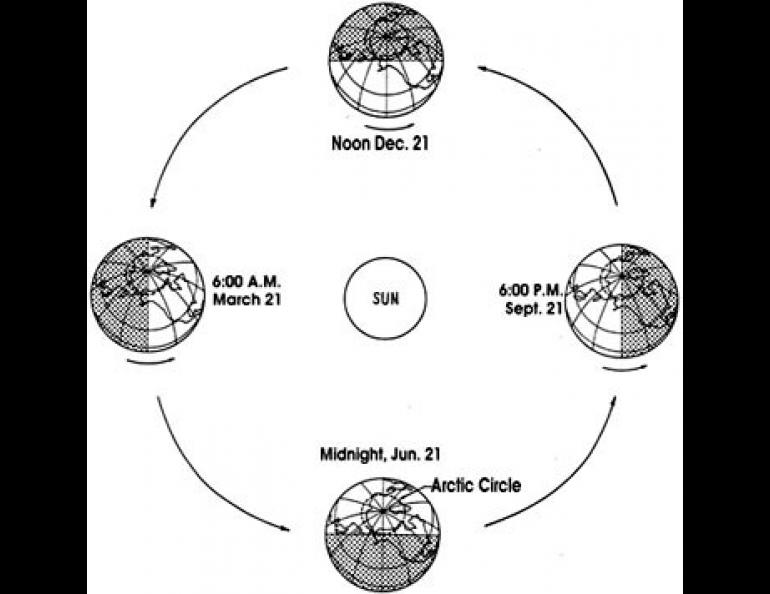
Winter Solstice
In much of the lower northern hemisphere, the recognition of winter solstice is largely overshadowed by anticipation of Christmas, which follows in only three to five days. But for those who live near or inside the Arctic Circle, solstice day is an important dawning of a new annual era: this is the day the sun starts coming back.
The exact time and date of winter solstice changes from year to year. On leap years solstice occurs about eighteen hours and ten minutes earlier than it did the previous year. On other years solstice occurs five hours and forty-nine minutes later than the year before. This year, solstice coincidentally happens at noon on December 21, Alaska Standard Time.
If one lives well north of the Arctic Circle, the fruits of the change at solstice are a bit slow in coming. On Alaska's North Slope the sun doesn't even come up until the latter half of January or early February. In the more heavily populated areas of Alaska and Yukon Territory, the day lengthens by less than a minute just after solstice. The pace quickens in a few days, and after a month, the sun is above the horizon several minutes longer than on the day before. The rapid change in length of day continues on through the spring equinox and then again slows as summer solstice approaches.
The rate of change also increases with latitude. At equinox the change is about 4.4 minutes per day at Ketchikan, at Juneau about 5.5 minutes, at Whitehorse and Anchorage about 6.1 minutes, and at Fairbanks 7.6 minutes. Fort Yukon's location on the Arctic Circle gives it a change of about 8.5 minutes per day, and Barrow tops all in this part of the world with a change of about 10.5 minutes per day.
When giving the change in the amount of sunshine each day, news media often round to the nearest minute. The resulting irregularity from one day to the next means nothing other than that rounding has occurred.
The annual pattern of sunshine duration is the consequence of the earth's axis always pointing in the same direction as the earth annually speeds around the sun at nearly seventy thousand miles per hour (100,000 km per hour). The rotation axis is tipped 22-1/2 degrees from the plane in which the earth moves (the ecliptic). This tipping determines the location of the Arctic Circle, which lies at latitude 66-1/2 degrees, just 22-1/2 degrees from the North Pole.





